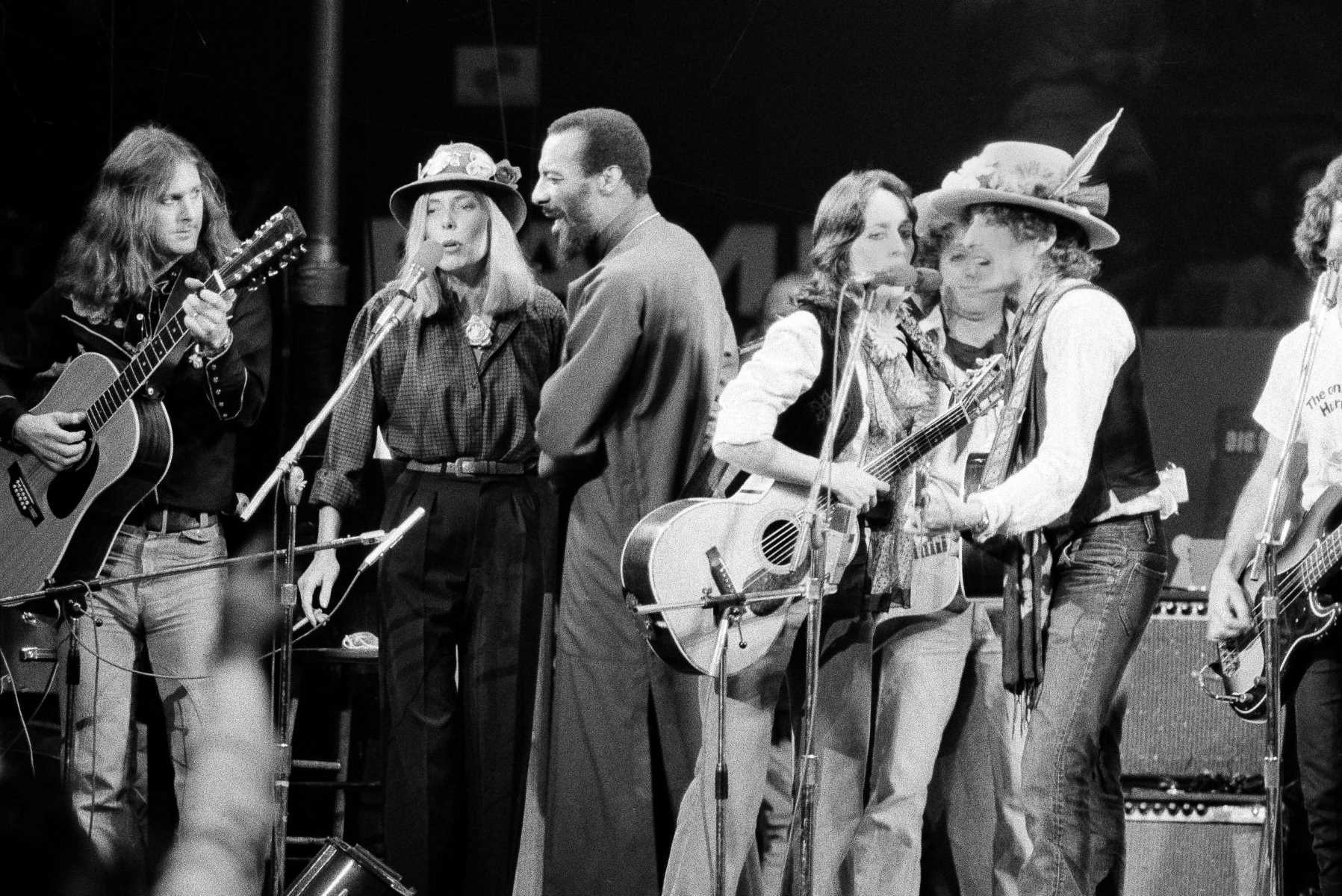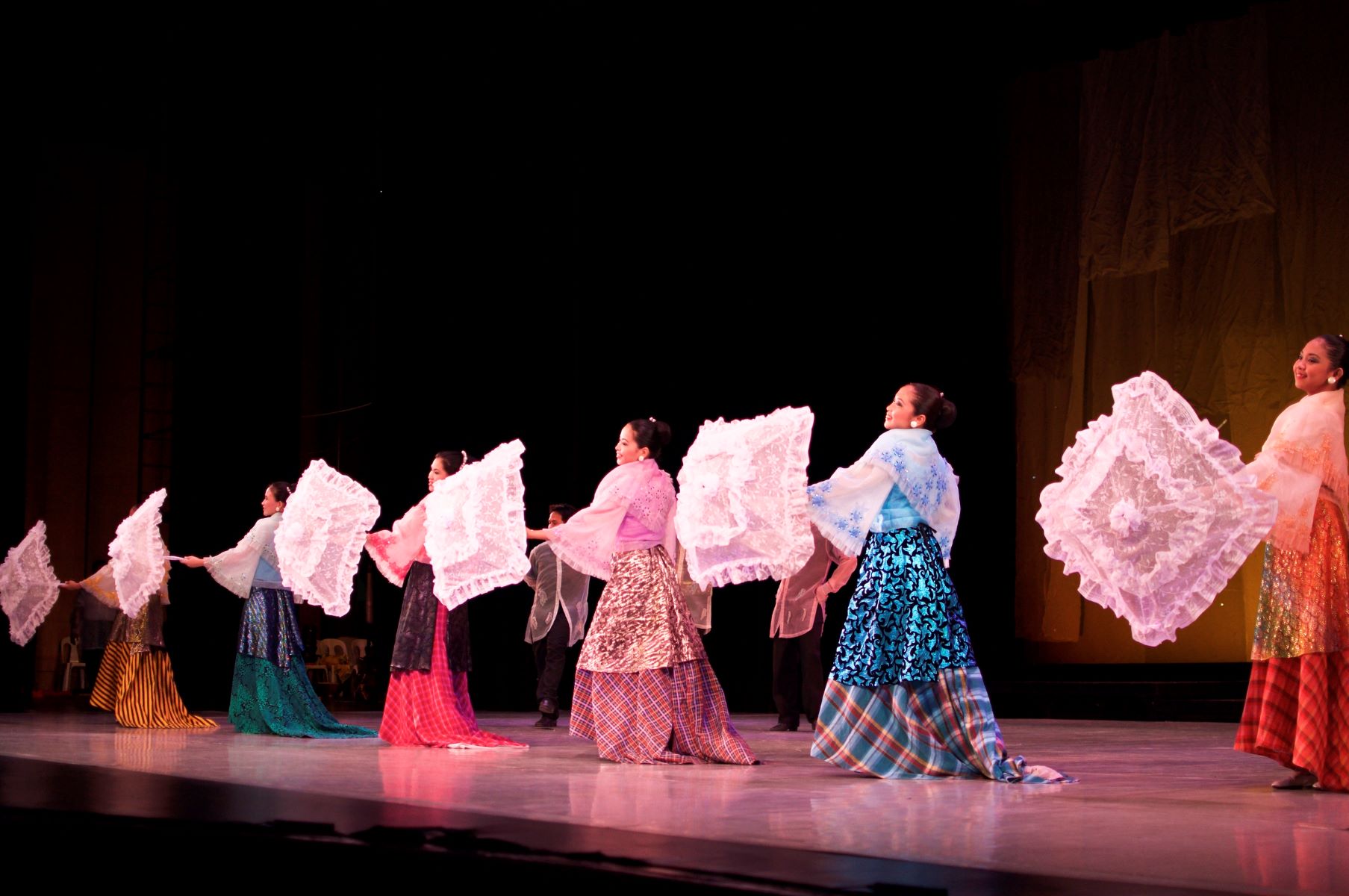

Folk
What Makes A Folk Song
Modified: March 11, 2024
Discover what makes a folk song unique and captivating. Dive into the rich history and melodic storytelling of folk music, highlighting the essence of tradition and cultural heritage.
(Many of the links in this article redirect to a specific reviewed product. Your purchase of these products through affiliate links helps to generate commission for AudioLover.com, at no extra cost. Learn more)
Table of Contents
Introduction
Folk songs have been an integral part of human culture for centuries. Passed down from generation to generation, these songs reflect the stories, struggles, and triumphs of ordinary people. Whether they are ballads, work songs, or lullabies, folk songs are a rich tapestry of human experiences and emotions.
But what exactly defines a folk song? And why do they hold such cultural significance? In this article, we will delve into the world of folk songs, exploring their characteristics, themes, regional variations, and evolution throughout history.
At its core, a folk song is a piece of music that is born from a community rather than an individual artist. It embodies the collective spirit and traditions of a particular culture or region. Folk songs are deeply rooted in oral tradition, often being passed down through generations and taking on different variations along the way. This oral transmission adds to the authenticity and connection that folk songs have with their cultural origins.
Unlike popular songs that are usually created for commercial success, folk songs are more about storytelling and preserving the cultural heritage. They speak to the universal human experiences of love, loss, joy, and determination. From protest songs that rally for social change to lullabies that soothe and comfort, folk songs encapsulate the essence of human existence.
Throughout history, folk songs have played a vital role in documenting historical events, political movements, and the daily lives of people. They were often used as a means of communication, sharing news and spreading messages of resistance and solidarity. In times of joy and celebration, folk songs served as a source of entertainment, bringing communities together through music and dance.
The beauty of folk songs lies in their simplicity and authenticity. They are often accompanied by traditional instruments such as guitar, banjo, fiddle, or even just simple hand clapping and foot stomping. The melodies are usually straightforward, with repetitive and memorable lyrics that allow for communal singing and participation.
As we explore the world of folk songs, we will delve into their characteristics, cultural significance, themes, regional variations, and the evolution of this timeless genre. From the traditional songs of the Appalachian Mountains to the haunting melodies of Irish ballads, the world of folk songs is a treasure trove of musical heritage waiting to be discovered. So, let’s embark on this journey together and uncover what makes a folk song truly unique and enduring.
Definition of Folk Songs
Folk songs can be defined as traditional songs that are created and shared by a community, passed down through generations via oral tradition. They are not usually attributed to a specific individual artist but are a collective creation of a culture or region. Folk songs often reflect the heritage, values, and experiences of a particular group of people.
One key characteristic of folk songs is their accessibility. They are typically simple in melody and structure, making them easy to sing and remember. This allows for communal participation, where people can join in singing and keeping the songs alive within their communities.
Unlike popular music that is often produced for commercial purposes, folk songs are deeply rooted in the cultural traditions of a specific group. They are created and performed for the love of the music and to preserve the cultural heritage. Folk songs often tell stories, narrate historical events, express emotions, and convey messages of social significance within the community.
Another defining characteristic of folk songs is their adaptability. These songs tend to evolve and change over time as they are passed down orally. Different versions and variations of the same song may exist, reflecting the unique interpretations and influences of each generation or region.
Furthermore, folk songs are closely intertwined with the historical and social context in which they originate. They serve as a documentation of the lived experiences, struggles, joys, and aspirations of a community. Many times, they become a means of protest, expressing the discontent or advocating for social change.
It is important to note that the term “folk song” can vary across cultures. Different countries and regions may have their own specific definitions and characteristics. For example, in North America, folk songs are often associated with the traditional music of indigenous peoples, as well as the songs of settlers and immigrants. In Ireland, folk songs are deeply connected to the country’s rich history and cultural identity.
In essence, folk songs are the threads that weave together the fabric of a community’s cultural tapestry. They are the songs that have been sung for generations, bridging the gap between the past and the present. Through their simplicity, authenticity, and timelessness, folk songs continue to resonate with audiences and hold a special place in the hearts of those who cherish their traditions.
Characteristics of Folk Songs
Folk songs possess distinct characteristics that set them apart from other genres of music. These characteristics contribute to the charm and timeless appeal of folk songs, making them resonate with audiences throughout the ages.
- Oral transmission: One of the defining aspects of folk songs is their transmission through oral tradition. They are passed down from one generation to another through singing or storytelling, rather than being written or formally composed. This oral transmission allows for variations and adaptations to occur, ensuring the songs remain relevant and reflective of the community’s evolving culture.
- Simplicity: Folk songs are known for their simplicity in melody, structure, and lyrics. The melodies are often easy to learn and sing along, allowing for communal participation. The lyrics are straightforward, often telling a story, expressing emotions, or conveying a message in a concise and accessible manner.
- Authenticity and communal nature: Folk songs are deeply rooted in the cultural traditions and values of a community. They are created and shared within the community, capturing the experiences, beliefs, and shared narratives of the people. This communal nature of folk songs fosters a sense of unity, allowing individuals to connect and express their identity as part of a larger collective.
- Themes of everyday life: Folk songs often revolve around universal human experiences and themes that resonate with people from all walks of life. Love, loss, nature, work, and social issues are frequent subjects found in folk songs. They provide a window into the lives of ordinary people, celebrating their joys, documenting their struggles, and reflecting the cultural values and traditions of the community.
- Adaptability and evolution: Folk songs have the unique ability to adapt and evolve over time. As they are passed down through generations, they may undergo changes, variations, and reinterpretations. This adaptability allows the songs to remain relevant and reflect the changing times and experiences of the community.
- Instrumentation: Folk songs are often accompanied by traditional instruments such as the guitar, banjo, fiddle, mandolin, or even just simple hand clapping and foot stomping. These instruments add a distinct texture and atmosphere to the songs, creating a harmonious blend of melody and rhythm.
These characteristics form the essence of folk songs, giving them a timeless quality that captures the hearts and minds of audiences. They embody the spirit and cultural heritage of a community, providing a rich and diverse musical tapestry for generations to enjoy and preserve.
Cultural Significance of Folk Songs
Folk songs hold immense cultural significance as they serve as a window into the history, traditions, and values of a community. These songs play a vital role in preserving and celebrating cultural heritage while fostering a sense of identity and connection among individuals.
One of the key cultural significances of folk songs is their role in storytelling. Through their lyrics and melodies, folk songs recount historical events, myths, and legends, allowing the past to come alive in the present. They provide a means of passing down knowledge and wisdom from one generation to another, ensuring that the cultural traditions and collective memory of a community are not lost.
Folk songs also serve as a powerful form of cultural expression. They provide a platform for people to share their perspectives, experiences, and emotions. They can be used to convey social and political messages, voice dissent, or celebrate cultural and national pride. Folk songs have been a potent tool for social movements, advocating for civil rights, justice, and equality.
Moreover, folk songs are deeply intertwined with cultural rituals and traditions. They are often performed during festivals, ceremonies, and community gatherings, adding a sense of vibrancy and celebration to these events. Folk songs bring people together, fostering a sense of unity and belonging within the community.
Through folk songs, cultural customs and traditions are preserved and passed down from one generation to another. They provide a sense of continuity and connection with the past, allowing individuals to anchor themselves in their cultural roots. Folk songs are a vehicle for cultural pride, helping communities maintain a distinctive identity in an increasingly globalized world.
Additionally, folk songs have the power to bridge cultural gaps and foster intercultural understanding. They can transcend language barriers and allow people from different backgrounds to appreciate and connect with each other’s cultures. Folk songs serve as a universal language, creating common ground and promoting cultural exchange and appreciation.
The cultural significance of folk songs can be seen across different regions and communities worldwide. Whether it is the haunting melodies of the Scottish Highlands, the lively rhythms of West African folk music, or the soulful ballads of the American Appalachian mountains, folk songs are the threads that weave together the cultural fabric of diverse societies.
Overall, folk songs serve as a living testament to the richness and diversity of human culture. They celebrate the past, express the present, and shape the future. Through their music and lyrics, folk songs capture the essence of a community’s history, values, aspirations, and struggles, leaving an indelible mark on the cultural tapestry of humanity.
Themes and Subjects in Folk Songs
Folk songs cover a wide range of themes and subjects, reflecting the universal human experiences shared by people across different cultures and time periods. These songs serve as a musical narrative that delves into various aspects of life, emotions, and societal issues.
One common theme found in folk songs is love and romance. Whether it is the joy of newfound love, the pain of heartbreak, or the longing for a distant lover, folk songs capture the nuances and complexities of human relationships. Love songs can be tender and melancholic, expressing the depths of emotions that love brings.
Work and labor is another prevalent theme in folk songs, especially in traditional folk music. These songs often depict the struggles and hardships faced by workers in various industries, such as farming, mining, or factory work. They provide a platform for individuals to express their hopes, frustrations, and solidarity with their fellow workers.
Social and political issues are also commonly addressed in folk songs. From protest songs that rally against injustice and inequality to songs that highlight the plight of marginalized communities, folk music has been a powerful vehicle for social commentary and activism throughout history. Folk songs give a voice to the voiceless and provoke thought and action in listeners.
Nature features prominently in many folk songs, celebrating the beauty and wonder of the natural world. These songs often pay homage to the landscape, flora, and fauna of a particular region. They reflect people’s connection to the environment and their desire to live in harmony with nature.
Folk songs frequently touch upon historical events and figures, telling stories and preserving collective memory. They document significant moments in a community’s history, such as wars, revolutions, or migrations. By singing about historical events, folk songs keep the narrative alive and pass down knowledge to future generations.
Religion and spirituality are also recurring themes in folk songs. These songs express devotion, faith, and the search for meaning in life. Spiritual folk songs often have a soothing and reflective quality, providing comfort and inspiration to those who listen.
Humor and storytelling play a role in folk songs as well. Songs with humorous lyrics and catchy melodies bring laughter and joy to listeners. Folk songs are often accompanied by humorous anecdotes and clever wordplay, adding a lighthearted element to the repertoire.
It is important to note that the themes and subjects in folk songs can vary greatly across different regions and cultures. Each community brings their unique perspectives, traditions, and stories to the genre, resulting in a rich tapestry of themes and subjects.
Overall, folk songs offer a diverse and multifaceted exploration of the human experience. They capture the essence of love, work, history, nature, and more, providing a glimpse into the collective consciousness of societies throughout time. Through their lyrics and melodies, folk songs connect us to our shared heritage and remind us of our common humanity.
Instruments Used in Folk Songs
Folk songs are often accompanied by a variety of traditional instruments that enrich the musical experience and contribute to the unique sound of each genre and region. These instruments complement the lyrics and melodies, adding depth, rhythm, and texture to the songs.
One of the most commonly associated instruments with folk music is the acoustic guitar. Its versatility and portability make it a staple in folk song accompaniment. The guitar provides a melodic foundation, strumming or fingerpicking the chords that support the vocals and other instruments. Its warm and resonant tones create a soothing backdrop for the storytelling nature of folk songs.
The banjo is another iconic instrument closely associated with folk songs, particularly in American and Appalachian music. It has a distinctive twangy sound that adds a lively and rhythmic quality to the songs. The banjo is often played in a fingerpicking style, providing intricate and lively melodies that accentuate the rhythmic drive of the music.
The fiddle, or violin, is prevalent in many folk traditions around the world. It is capable of expressing a wide range of emotions, from mournful to jubilant. The fiddle adds a haunting and soulful element to folk songs, often taking on the role of the lead instrument. Its expressive capabilities allow it to mimic the human voice, conveying the nuances of the song’s storytelling.
Another instrument commonly found in folk music is the mandolin. With its small, guitar-like body and eight double courses of strings, the mandolin offers a bright and vibrant sound. It is often used for melodic embellishments and fills, adding ornamentation and a touch of brilliance to folk songs.
Percussion instruments are integral to the rhythmic drive of many folk songs. Simple handheld percussion such as tambourines, shakers, and hand-clapping create a lively and infectious beat that encourages audience participation. Bodhráns, a traditional Irish drum, provide a steady pulse and accentuate the rhythm in Irish folk music.
The accordion is a popular instrument in various folk traditions, particularly in European and South American musical styles. Its ability to produce sustained notes and create a rich harmonic foundation makes it a versatile instrument in folk song arrangements.
Other instruments like the dulcimer, harmonica, bouzouki, and penny whistle are also commonly used in folk songs, depending on the region and style. Each instrument brings its unique timbre and character, contributing to the overall sound and atmosphere of the music.
It is worth noting that many folk songs were traditionally performed acapella or with minimal instrumental accompaniment. In these cases, the focus is on the vocal harmonies and the storytelling aspect of the song itself.
The choice of instruments in folk songs varies greatly depending on the culture, region, and style of the music. The combination of these instruments creates a rich tapestry of sound, allowing folk songs to be vibrant, emotive, and deeply rooted in their cultural origins.
Regional Variations of Folk Songs
Folk songs exhibit a remarkable diversity across different regions and cultures, showcasing the unique musical traditions and cultural identities of each locality. Just as language and customs vary around the world, so too do the melodies, rhythms, and themes found in folk songs.
In North America, for example, the Appalachian region has a rich tradition of folk music. Appalachian folk songs often feature heartfelt storytelling and vocal harmonies accompanied by acoustic instruments such as the guitar, banjo, and fiddle. These songs embody the resilience and heritage of the people who settled in the Appalachian Mountains.
In Ireland, traditional Irish folk songs are renowned for their lively and emotive melodies. Instruments such as the bodhrán (a hand-held drum), tin whistle, fiddle, and accordion create the distinctive sound that captures the essence of Irish culture. Irish folk songs often recount folklore, history, and tales of love, longing, and rebellion.
Scottish folk songs, on the other hand, are marked by their haunting and evocative melodies. The bagpipes, fiddle, and accordion are commonly used to accompany the songs, transporting listeners to the rugged landscapes and rich heritage of Scotland. These songs often celebrate Scottish history, folklore, and the beauty of the Highlands.
In West Africa, traditional folk songs are deeply rooted in oral tradition and serve as a means of storytelling and cultural preservation. Instruments such as the kora, djembe, and balafon are used to create intricate polyrhythms that drive the music. West African folk songs reflect the diverse ethnic groups and cultural practices of the region, addressing themes of unity, spirituality, and daily life.
The folk songs of South America exhibit a captivating blend of indigenous and European influences. In the Andean region, the charango, pan flutes, and guitar feature prominently in folk music, creating a lively and melodic sound. These songs often depict Andean folklore, indigenous traditions, and the struggles of the local communities.
The regional variations of folk songs are not limited to these examples, as every culture and region around the world has their own unique folk music traditions. Whether it is the haunting melodies of Nordic folk songs, the rhythmic energy of Caribbean folk music, or the soulful ballads of Eastern European folk songs, each region brings its own distinct flavor to the genre.
Exploring the regional variations of folk songs allows us to appreciate the rich tapestry of human culture and the diverse musical expressions that exist worldwide. Through these songs, we gain insight into the history, customs, and perspectives of different communities, ultimately fostering cross-cultural appreciation and understanding.
Evolution of Folk Songs
Over the centuries, folk songs have undergone an evolution, adapting to the changing times and influences of various cultures. This evolution is marked by shifts in musical styles, lyrical content, and the ways in which the songs are transmitted and performed.
Originally, folk songs were primarily transmitted orally, passed down from generation to generation through singing and storytelling. With each rendition, small changes and adaptations were made, resulting in regional variations and unique interpretations of the songs. This process allowed folk songs to evolve organically, reflecting the cultural shifts and experiences of the communities that embraced them.
One significant influence on the evolution of folk songs was the advent of written notation and recording technology. These innovations allowed for the preservation and dissemination of folk songs on a larger scale. With the ability to write down music and record performances, folk songs became more accessible to a wider audience, allowing for their continued growth and popularity.
In the 20th century, the folk music revival movement further impacted the evolution of folk songs. This movement, particularly in the United States and Europe, saw a renewed interest in traditional music and sparked a wave of experimentation and reinterpretation of folk songs. Artists like Bob Dylan, Joan Baez, and Pete Seeger brought folk music into the mainstream, infusing it with contemporary influences and using it as a means of political and social commentary.
Advancements in technology also played a role in the evolution of folk songs. The rise of radio, television, and the internet allowed for the dissemination of folk music across borders and continents. It facilitated collaborations between musicians from different cultural backgrounds, leading to the fusion of folk music with other genres and the exploration of new musical territories.
Another significant transformation in the evolution of folk songs was the incorporation of electric instruments and amplified sound. This shift, particularly in the folk-rock movement of the 1960s, brought a new energy and a more modern sound to the genre. While purists criticized these changes, the fusion of traditional folk elements with contemporary instrumentation expanded the reach and appeal of folk music to new audiences.
Contemporary folk songs continue to evolve, reflecting the social, cultural, and political climate of the times. Artists draw inspiration from diverse musical traditions, experiment with new sounds and production techniques, and address current issues through their lyrics. The genre remains a dynamic and vibrant space for creative expression and storytelling.
Despite the evolution and adaptations, the core essence of folk songs – their ability to connect people, express emotions, and preserve cultural traditions – continues to endure. Folk songs retain their power to evoke nostalgia, inspire social change, and capture the spirit of the communities they represent. As long as humans continue to sing and tell stories, folk songs will continue to evolve and thrive as an integral part of our musical heritage.
Contemporary Folk Songs
Contemporary folk songs represent the modern evolution of the genre, showcasing the continued relevance and adaptability of folk music in the present day. These songs draw inspiration from the rich traditions of folk music while incorporating contemporary influences, themes, and production techniques.
One hallmark of contemporary folk songs is their lyrical depth and social commentary. Artists use their music as a platform to address current issues, advocate for social justice, and shed light on pressing societal concerns. These songs tackle topics such as inequality, environmentalism, mental health, and the human experience in the modern world. The lyrics of contemporary folk songs often provide a powerful and introspective storytelling medium, engaging listeners in thoughtful reflection and dialogue.
Musically, contemporary folk songs often incorporate a broader range of instruments and genres. While still rooted in acoustic instrumentation, artists may experiment with electric guitars, keyboards, and other non-traditional elements to create distinctive arrangements and sounds. The blending of folk with elements of indie, rock, and pop music adds a contemporary flair and broadens the appeal of the genre.
Contemporary folk artists also continue the tradition of storytelling but in a modern context. They use their songs to tell personal stories, explore relationships, and convey emotions in an intimate and relatable manner. The narratives found in these songs can be autobiographical or draw inspiration from the experiences of others, creating a sense of connection and empathy with listeners.
In addition to the traditional solo singer-songwriter format, contemporary folk music often embraces collaborative efforts and intercultural influences. Artists from different backgrounds and genres come together to create music that transcends boundaries and brings diverse perspectives into the fold. This collaboration results in a fusion of musical styles and cultural expressions, enriching the contemporary folk music landscape.
Contemporary folk songs are not limited to a specific region or culture. They reflect the global nature of our interconnected world, with artists drawing inspiration from diverse musical traditions and blending them with their own unique voices and experiences.
Notable contemporary folk artists such as Bon Iver, Fleet Foxes, and Iron & Wine have captured the attention of mainstream audiences while staying true to the essence of folk music. Their introspective lyrics, enchanting melodies, and innovative musical arrangements epitomize the spirit of contemporary folk songs.
Contemporary folk music continues to captivate listeners and provide a platform for introspection, social commentary, and musical exploration. It serves as a reminder that folk music is a living, evolving genre that continues to speak to the human experience in the ever-changing world we inhabit.
Conclusion
Folk songs hold a special place in the musical landscape, transcending time and borders to weave together the stories, traditions, and cultural identities of diverse communities. From their humble beginnings rooted in oral tradition to their continued evolution in the digital age, folk songs have remained a powerful and enduring form of artistic expression.
Throughout this article, we have explored the definition, characteristics, cultural significance, and regional variations of folk songs. We have delved into the themes and subjects that these songs encompass, ranging from love and labor to social commentary and spirituality. We have also discussed the instruments used in folk songs, as well as the evolution of the genre and the emergence of contemporary folk music.
Folk songs serve as a testament to the human experience, capturing the emotions, struggles, triumphs, and aspirations of ordinary people. They embody the essence of a community’s cultural heritage, providing a means of storytelling and preserving collective memory. Folk songs are a reflection of our shared humanity, uniting us through the power of music and reminding us of our interconnectedness.
As we continue to navigate the complexities of the modern world, folk songs remain a source of solace, inspiration, and connection. They invite us to listen, learn, and engage with different perspectives, cultures, and histories. Through their melodies, lyrics, and timeless appeal, folk songs encourage us to celebrate our diversity, honor our traditions, and strive for a more harmonious and understanding society.
So, whether you find yourself tapping your feet to the lively tunes of Irish folk music or contemplating the profound lyrics of a contemporary folk ballad, remember that folk songs have the power to transcend language, time, and boundaries. They invite us to embark on a musical journey that spans generations and cultures, reminding us of the enduring beauty and universal significance of this timeless genre.











